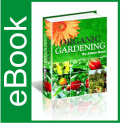How to increase garden seed germination
How to increase garden seed germination
Article by Timmy Helve
It is always disheartening to plant vegetable seeds which later fail to germinate. There are certain factors that usually cause poor germination rates, but most are in your control. By taking into account some of these issues, you will be able prevent this problem and enjoy a plentiful harvest.To begin with, evaluate the type of soil you are using. It is good to use a high-quality starting soil. Such soil can usually be found in a garden center for a good price, and is worth the investment. The best soil is well formulated to support maximum growth. If you want to plant organic vegetable seeds, there is a variety of starting soils that are specially made for this.
Buying soil can take a bit of effort. You can still use the soil that you already have, of course, but you may need to add to it if you want to get the best results from your planting. All you need to do is to conduct soil testing. If you know a qualified extension service or nursery where they can do this for you, it will be better. If locals are already using the soil that you have, then there is no need of the test. Just check what the other farmers are doing. Ensure the soil you have has an adequate supply of essential nutrients. Make use of modern composting techniques. Finally, if you are growing your seeds indoors, prepare and put the soil inside the green house for several days.
The majority of vegetable seeds do best indoors in colder climates or seasons. This is because protection allows them to cope with the cold seasons and get a better start. If you are using covers to provide a more stable growing environment, you can remove these covers once the warm season arrives. Indoor growing is especially helpful if you are dealing with garden seeds that need longer growing seasons than your region allows. Root crops such as turnips, carrots and radishes do not need to start indoors.
The second important factor is light. Most vegetable garden seeds need adequate sunlight in order to flourish. In many locations, the month of February actually receives plenty of sunlight for growing purposes. During such a warm month, all you need to do is to remove any cover or obstruction, and your plants will get all the sunlight they need. This is better done in the morning. For best results, try to make sure your garden receives six to eight hours of sunlight. If you are growing your garden vegetables indoors, consider installing lights. Install a lighting system that is specially rated for growing plants.
Another issue that you need to look into is heat. Get heat pads or plant heaters if your area has a cold climate, or if you want to get a head start on the season by planting early. Some climates are not friendly to certain varieties of vegetable seeds. If you cannot afford such a heating system, cover your seedlings using with some sort of propagation dome to protect them from frost. This ensures temperate conditions and promotes humidity, which garden seeds require for optimal germination. Propagation domes are easily available in gardening store nationwide, and you have probably seen them in the countryside on large farms. You can also use a translucent plastic container. The dome acts as a small greenhouse. Propagation domes work by creating an enclosed space. This space heats up during the day and retain enough heat at night to protect the plants as though they were growing in a warmer climate. The soil absorbs this heat, which assists in seed germination. The space cools during the night, and the heat in the soil is released. A more constant average temperature is maintained.
Finally, all the above-mentioned considerations would be useless if you buy poor-quality seeds. Ensure you buy your seeds from reputable companies. Your garden seeds should not be more than a year old, and their tested germination rate ought to exceed 95%.
About the Author
Timm Helverson is the author of this article on vegetable seeds. Find more information on vegetable seed catalogs here
Use and distribution of this article is subject to our Publisher Guidelines
whereby the original author’s information and copyright must be included.

 September 3, 2012
September 3, 2012 







